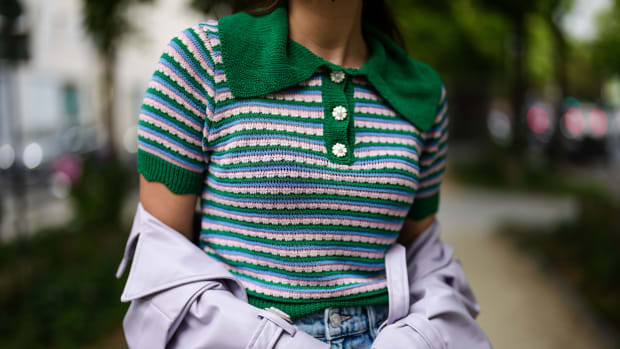The Pacific Northwest is baking.
It's a region designed for mild summers, with warm, dry days that act as a respite from the cool, cloudy conditions through the rest of
the calendar. What it's not designed for, however, are triple-digit temperatures; the area lacks proper infrastructure to equip residents with the mechanisms they need to cope. (As of 2019, just 44% of Seattle residents reported having some form of air conditioning.)
This is a dilemma of life-or-death significance. In late June, a historic heat wave prompted record-breaking temperatures across British Columbia, Oregon and Washington, killing hundreds. And now, the extreme heat is back: While Portland typically averages just one 100-degree day a year, a Wednesday and Thursday in mid-August brought that total up to five in 2021.
It's not only the Pacific Northwest that's scorching. This summer, sizzling temperatures hit tourist hot spots across northern Africa and southern Europe. Spain, for one, saw temperatures clocking in at 115 degrees Fahrenheit, just three degrees off of Europe's overall heat record of 118.4 degrees (Athens in 1977).
Climate scientists have been cautioning us about our blazing future for decades. Now, that future is here — and it's only going to get hotter. In a study published in July in the journal Nature Climate Change, researchers found that severe heat events are up to seven times more likely to occur between now and 2050, and more than 21 times more likely to occur from 2051 to 2080.
So, what will we wear?
With vulnerable lives and failing infrastructure at risk, the contents of our wardrobes aren't exactly top of mind — survival is, particularly for those disadvantaged communities already at the apex of the climate crisis. But what if that survival could, in some small sense, hinge on the shirts on our backs? What if our clothing could keep us cool or monitor our health or even absorb our carbon emissions? Fashion exists to outfit our lives, after all, and as those lives are changing, that outfitting has never been more crucial.

As of 2019, just 44% of Seattle residents reported having some form of air conditioning.
Photo: Michael Hanson/AFP via Getty Images
The retail industry isn't hitting the ground running — yet, anyway. In the last five years, your favorite retailers have almost certainly found themselves at the center of an ongoing reckoning over issues of sustainability, as well as workers' rights, feminism, anti-racism and inclusivity. And while fashion isn't the second-most polluting industry, as is frequently claimed, it's not squeaky clean, either: The apparel and footwear sectors produce more than 8% of total global greenhouse gas emissions, according to a 2018 Quantis report, with emissions projected to increase by more than 60% by 2030.
Still, fashion isn't absolved from participating in solutions, and from doing so urgently. No industry is, most notably those that remain reliant on the extraction of fossil fuels, like fast fashion. So while mass retailers are aiming to dilute their carbon footprint by, say, minimizing their wastewater, it's not making Portland any cooler. What might, though, is the textile innovation we owe, not to executives seated throughout a Park Avenue boardroom, but to scientists in starched white lab coats.
This spring, researchers in MIT's Department of Mechanical Engineering published a breakthrough of seismic significance for the apparel and footwear industries of a progressively hotter world. Five years ago, engineers set out to take polyethylene — a thin and lightweight polymer, and the most common plastic in use today — and spin it into fibers that offer self-cooling properties. In 2021, they succeeded, and now have developed technology that can transform a multitude of single-use plastics into clothing that can regulate your body temperature.
MIT's polyethylene textiles work by absorbing and evaporating moisture, and doing so much more quickly than the planet's most ubiquitous fabrics like cotton, nylon and polyester. Dr. Svetlana Boriskina, a research scientist on the project, approximates that polyethylene fabrics can be used interchangeably with traditional fibers; they also offer a smaller ecological footprint over their lifecycle.
Boriskina's background isn't in textile engineering, but in optics and photonics — specialized fields that can simply be defined as physics based on the science of light. This enabled her to approach polyethylenes not from a garment perspective, but rather from one rooted in light generation, detection and manipulation. This made all the difference.
Recommended Articles
"We were looking for a new approach to how we can cool passively," Boriskina says. "People figured out how to warm passively with insulation a long time ago. Cooling is harder. Because I have this optical background, I realized there's one mechanism we hadn't tapped into, and that's radiation."
Most (if not all) conventional clothes trap heat radiation inside the fabric, she says, where it then gets absorbed by the body. Through MIT's research, engineers determined polyethylene is the only known alternative that can provide the kind of transparency needed to repel radiation, not sponge it up. What's even more important than its physical characteristics, though, is the fact that you can actually wear it.
"That was actually one of the reasons why, traditionally, polyethylene has not been used for clothes," Boriskina says. "As we know from experience with plastic bags, polyethylene is actually a hydrophobic material. It repels water, which is great if you want to stop rain, but not so great if you want to remove sweat from the skin."
The engineers began with polyethylene in its raw powder form, which they then extruded into slender fiber strands that could then be grouped together to create a weavable yarn. During the extrusion process, the fiber oxidizes, changing its surface energy from being hydrophobic to hydrophilic, where it first attracts excess moisture before wicking it away to its surface.
"When you touch the fabric, you get this immediate cooling sensation on the fingertips," Boriskina says. "That signifies that the energy is being removed from the material."
The beauty of polyethylene is in its versatility. Because Boriskina's team has been able to produce a yarn out of the extruded polyethylene fibers, the fabric can be incorporated into any modern supply chain that may use something like cotton. And by mixing a colorant into the raw powder, it can also be dyed without water, an enormous environmental benefit for an industry that ranks among the gravest offenders of pollution and water waste.

A thermometer in Portland reading 116 degrees Fahrenheit during the Pacific Northwestern heat wave in June.
Photo: Maranie Staab/Bloomberg via Getty Images
Though ingeniously engineered, polyethylene is not technically a "smart" fabric — those have been in development for years, including for climate-focused application in UV protective and plasma-treated clothing. At Fudan University in Shanghai, polymer scientists Peining Chen and Huisheng Peng have woven together electrically conductive transparent fibers and luminescent threads into a flexible, breathable fabric that can serve as a wearable display.
Fudan University researchers created a prototype with a slim textile display that, according to reporting from Inside Science, could monitor volunteers who wore headsets that read their brain waves. Just imagine the implications for healthcare: In practice, this display could track an individual's hypothalamus, a section of your brain that controls thermoregulation, and indicate when your internal temperature is growing too high or dipping too low.
Elsewhere, scientists at the German Institutes of Textile and Fiber Research have developed carbon fibers made from raw biomaterials in an attempt to create emission-free versions of the world's most invasive, synthetic elements we find in fast fashion, like the aforementioned polyester and nylon.
Boriskina and her colleagues only just published their findings this March, but MIT is already implementing its polyethylene fabric into a number of garment-based projects for the U.S. Navy. (Understandably, she's keeping mum on the details.) They've launched their own standalone company, too, one that Boriskina expects will provide their polyethylene to manufacturers — activewear is of interest — while also overseeing its own clothing production. Accessibility is top of mind: How can the apparel industry get its products into the hands of the at-risk groups who need it most?
"This is a very large market, so being a startup, we're hoping that these larger companies will go through the licensing process and we can do some trials for them," she says. "We're quite optimistic that this could be on the market soon."
Time is of the essence. Pretty soon, self-cooling fabrications like Boriskina's will become more and more necessary for living through extreme heat, and all the ramifications that come with it. It's just a question of when, not if, the apparel industry will catch up.
Never miss the latest fashion industry news. Sign up for the Fashionista daily newsletter.




